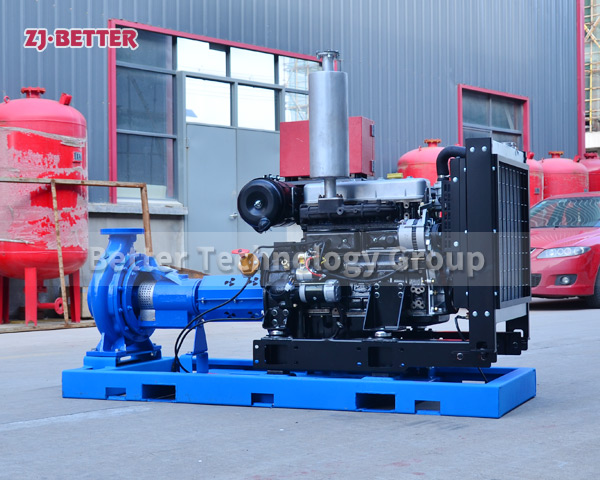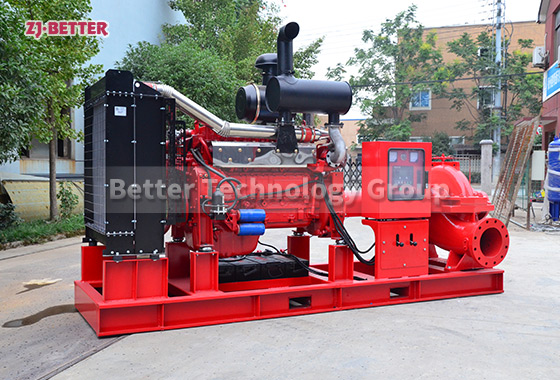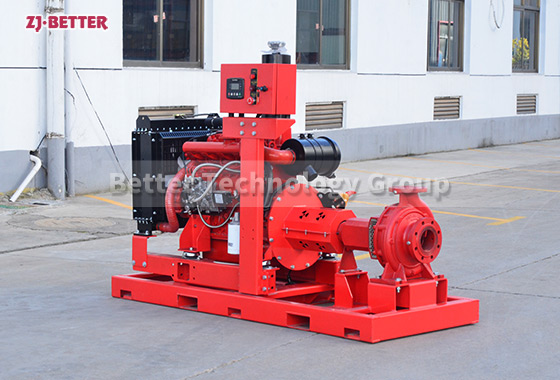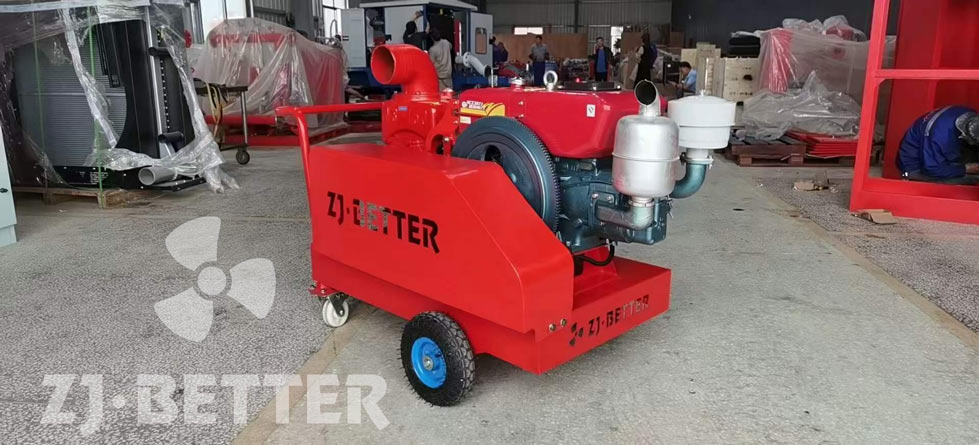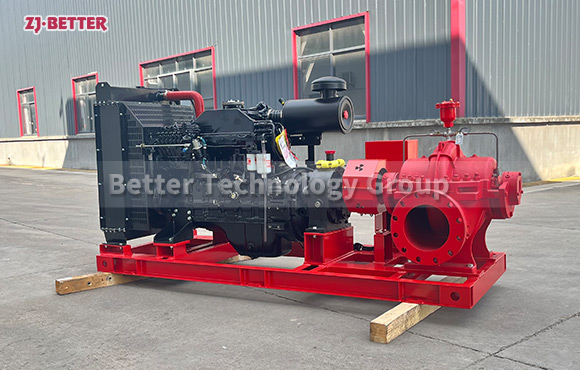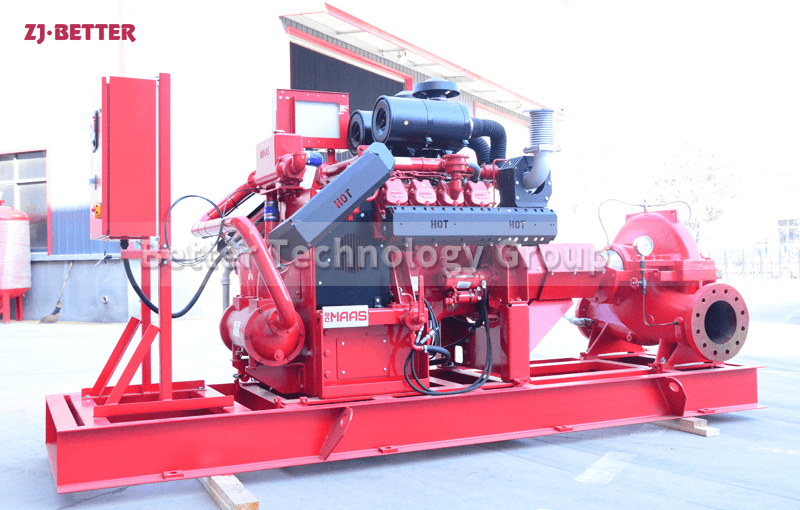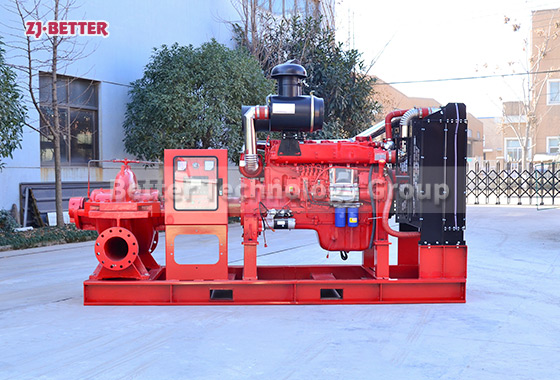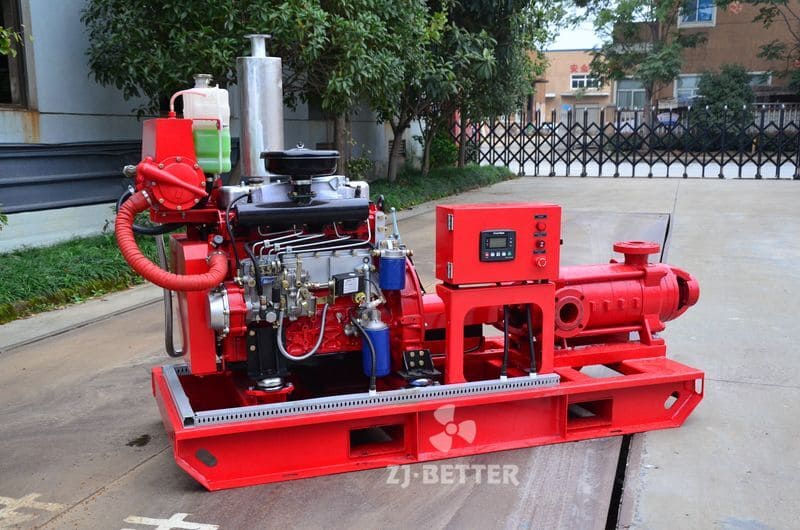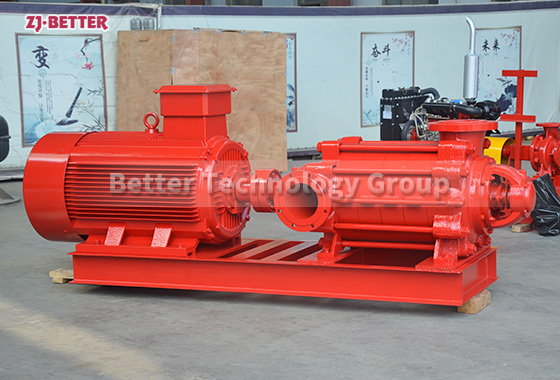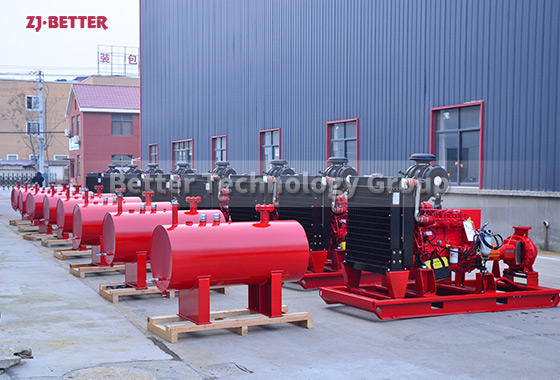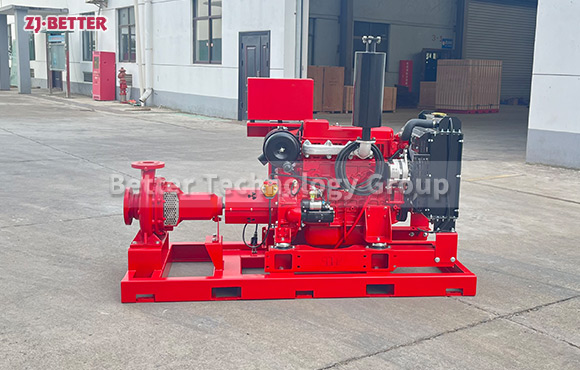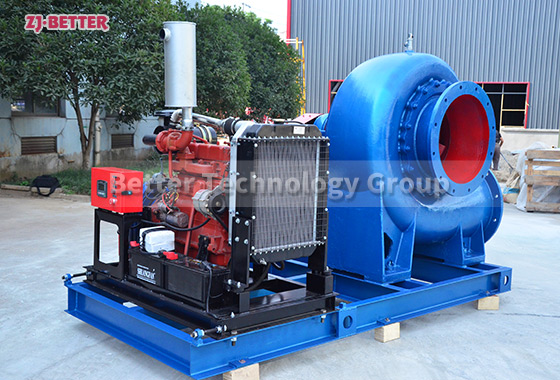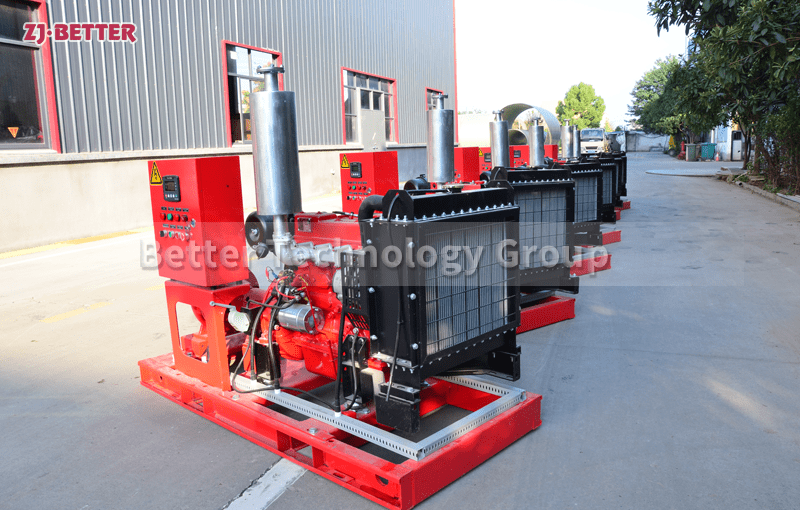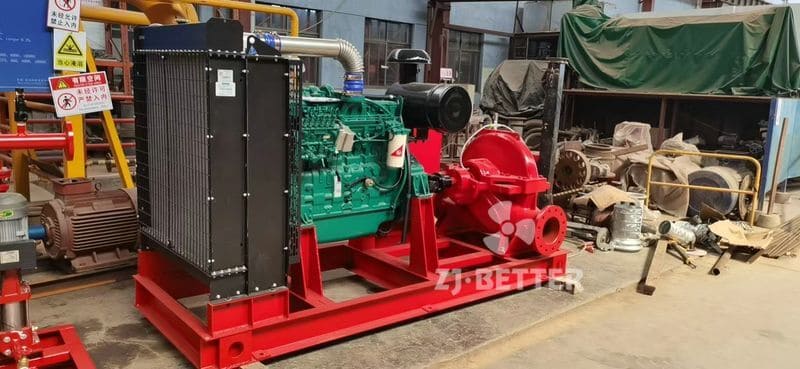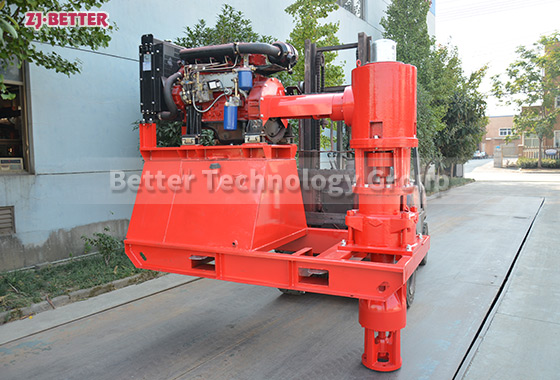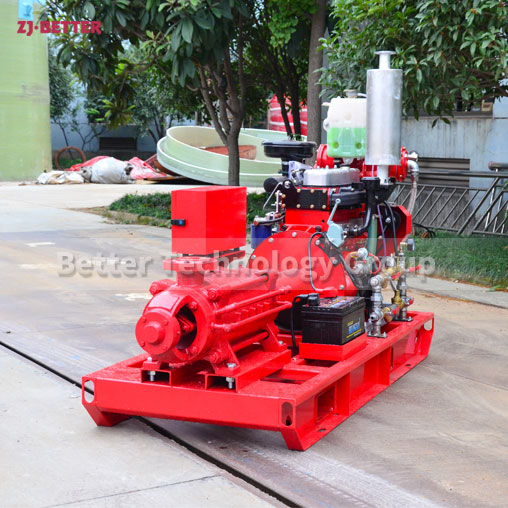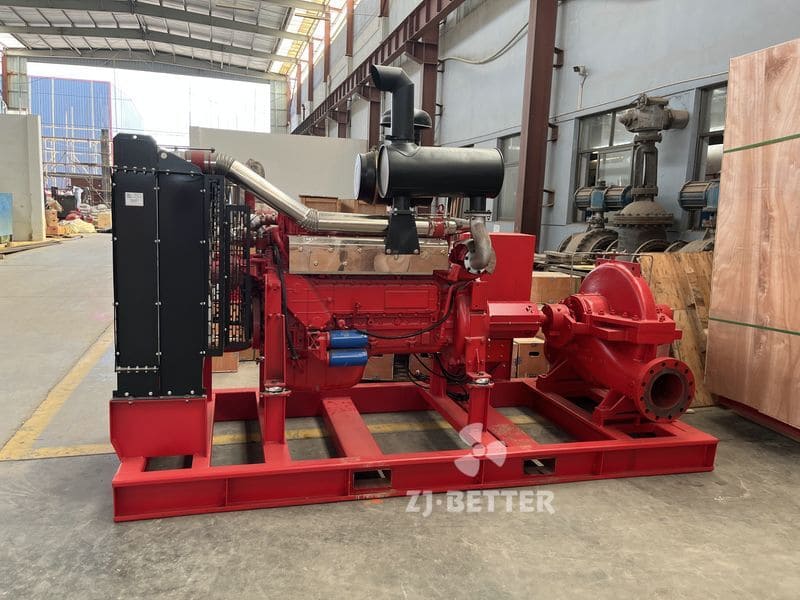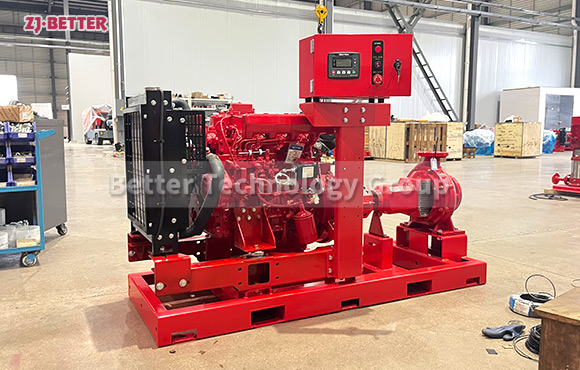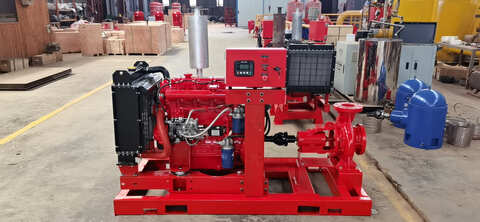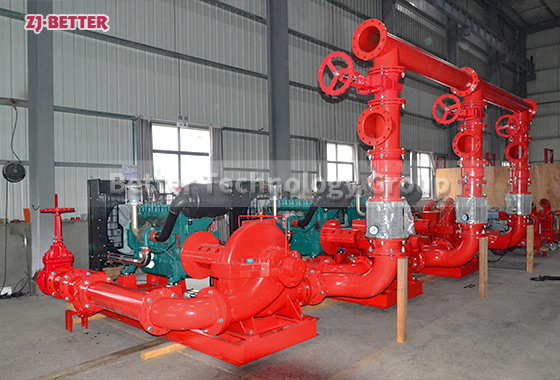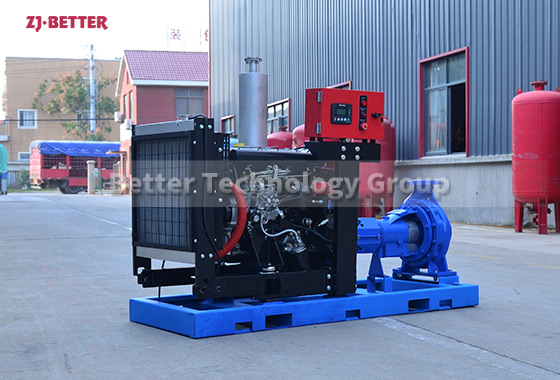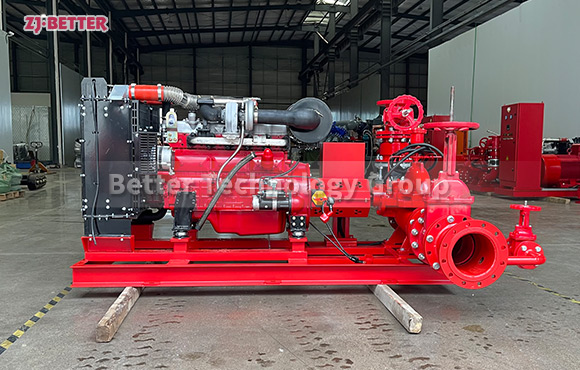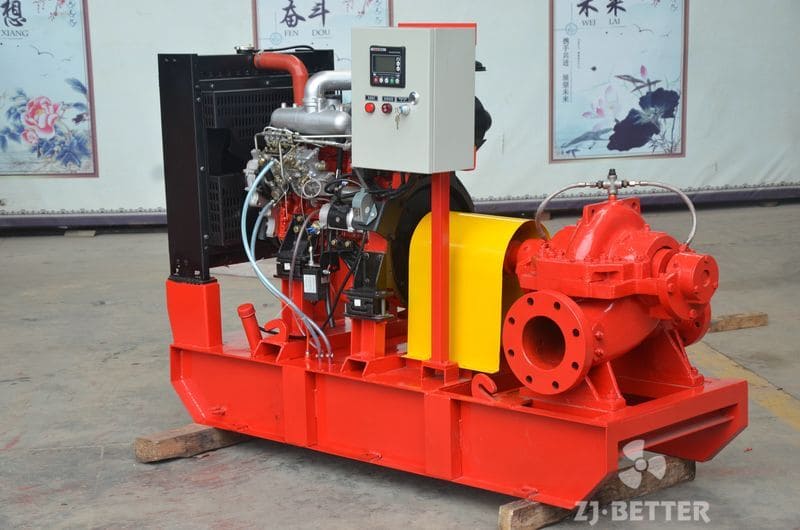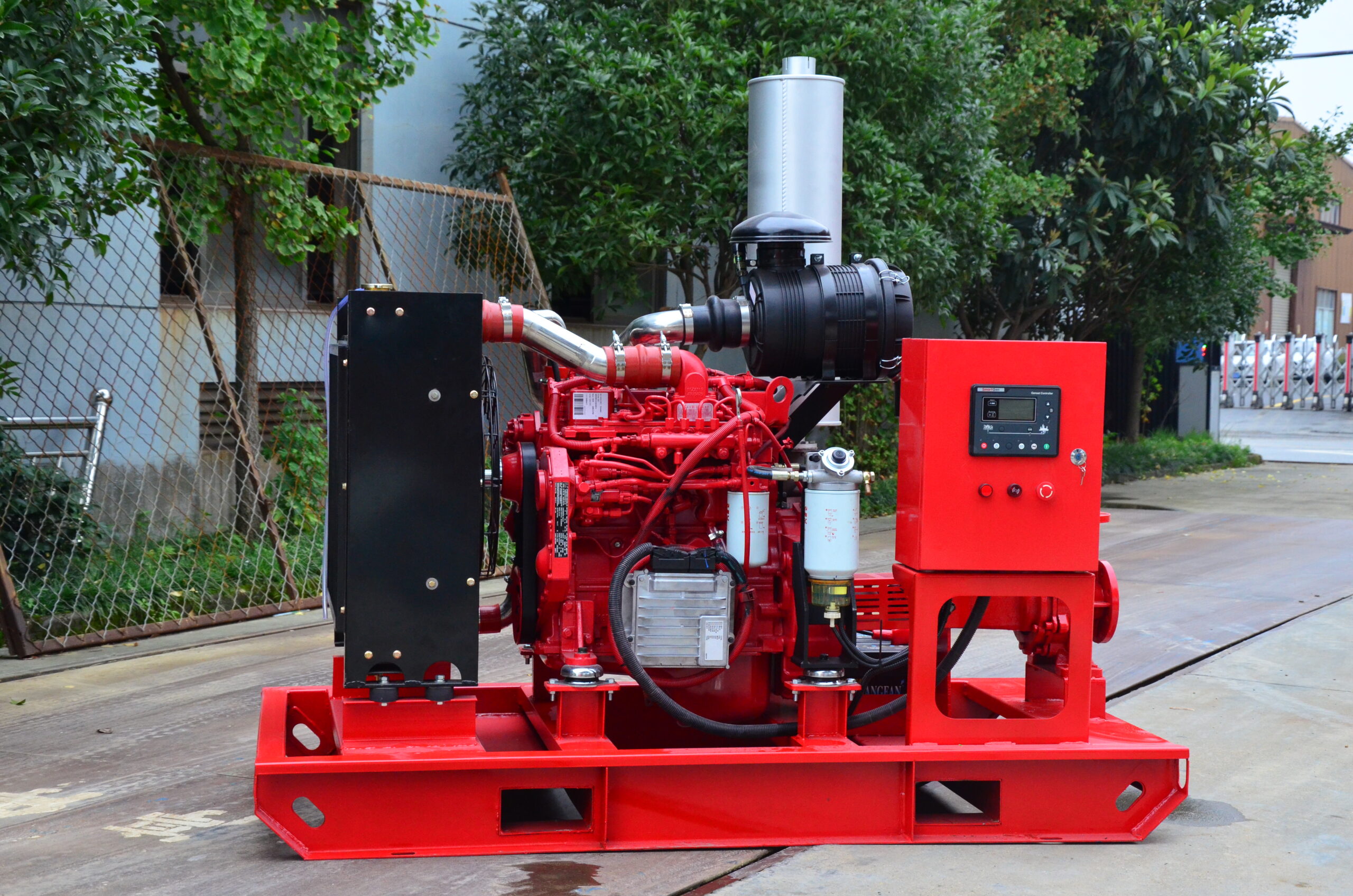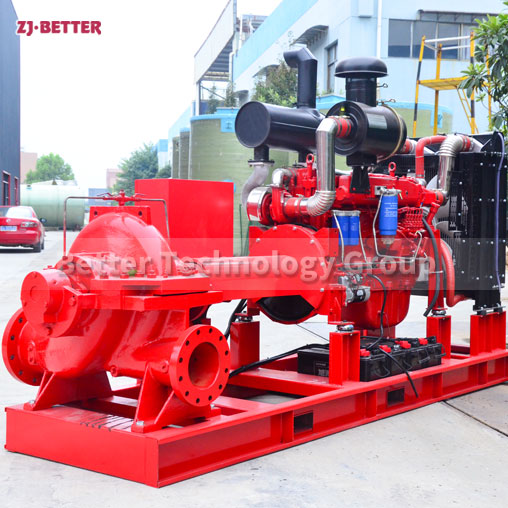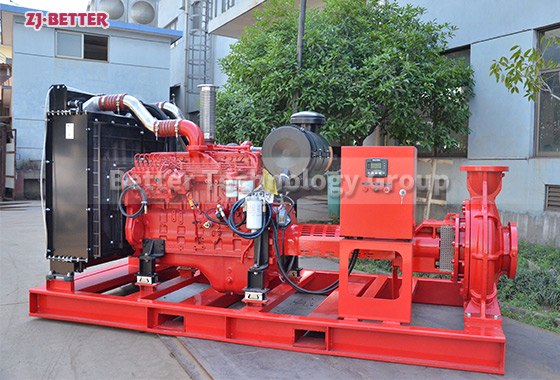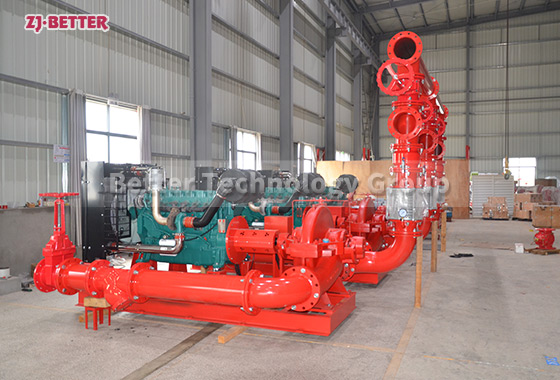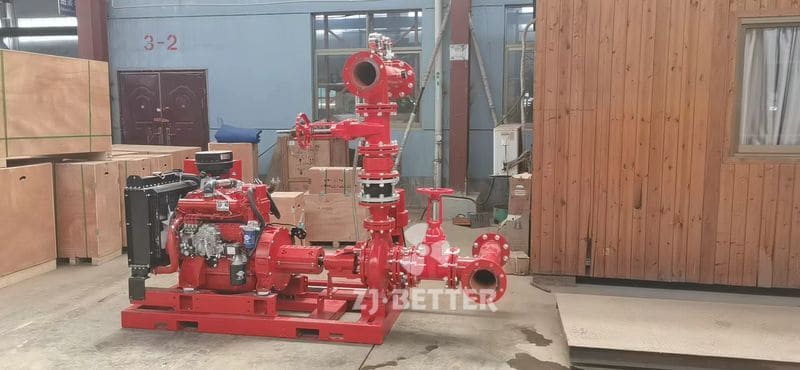The diesel engine fire pump set has a perfect indication system
The fire pumps used by the diesel engine fire pumps are selected from our company’s horizontal single-stage fire pumps, horizontal split double-suction fire pumps, and horizontal multi-stage fire pumps. The diesel engines used in this series of equipment are domestic or imported high-quality products, which have the characteristics of good starting characteristics, strong overload capacity, compact structure, convenient maintenance, simple use, and high degree of automation. It is an advanced and reliable fire-fighting equipment.
It has a complete indication system: ready to start, manual start, automatic start, unit running, unit shutdown, battery charging, overspeed, diesel engine lubricating oil pressure is too low, supercharger oil pressure is too low, diesel engine lubricating oil temperature is too low, Diesel engine cooling water temperature is too high, battery voltage is too low, fuel oil level is too low (or missing), diesel engine cooling water temperature is too low to preheat.
It has a complete alarm or protection system: alarm or protection for three start failures, overspeed alarm or protection, low oil pressure alarm or protection for lubricating oil, low oil pressure alarm or protection for supercharger, high temperature alarm or protection for cooling water, Lubricating oil temperature is too low alarm or protection, automatic charging device failure alarm, battery voltage is too low alarm, battery voltage is too high alarm, oil level low alarm or protection.
It has a complete display system: diesel engine lubricating oil pressure, diesel engine speed, battery charging current, battery charging voltage.

